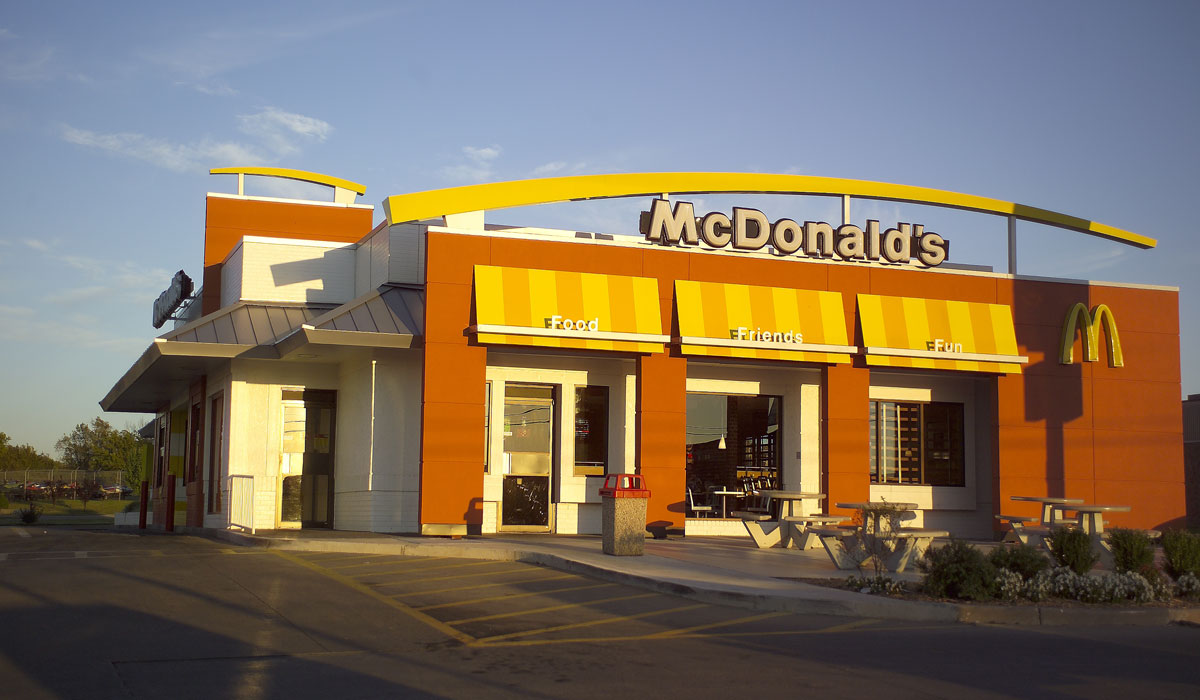Despite exceeding Wall Street expectations yet again Tuesday morning, McDonald’s doesn’t plan to sit back and let the earnings pile up. Chief financial officer Kevin Ozan said in a statement that the fast-food company plans to invest about $2.4 billion of capital in 2018, the majority of which will go to deploying the “Experience of the Future” design at U.S. locations.
“Our development plans also include the opening of about 1,000 new McDonald’s restaurants, 75 percent of which will be funded by our expanded network of developmental licensees and affiliates around the world,” Ozan said in a statement. The company previously said it expects to update most of its free-standing U.S. locations to the design by the end of 2020.
McDonald’s reported adjusted earnings per share of $1.71 in the fourth quarter, besting Thomson Reuters’ prediction of $1.59. It posted revenue of $5.34 billion, also topping predictions of $5.22 billion. And same-store sales in the U.S. increased 4.5 percent, which edged the expected 4.3 percent growth.
READ MORE: Why 2018 could be McDonald’s best year ever.
“2017 was a strong year for McDonald’s as customers responded to the many ways we are making their experience more convenient and enjoyable,” McDonald’s president and chief executive officer Steve Easterbrook said in a statement.
For fiscal 2017, McDonald’s global comparable sales climbed 5.3 percent, giving the company its best sales performance in six years. Systemwide sales were up 7 percent and McDonald’s reported positive guest counts in all segments. Before 2017, customer traffic dropped in each of the past three fiscal years.
“We served more customers more often, achieved our best comparable sales performance in six years, gained share in markets around the world, and made tremendous progress with growth platforms such as delivery, mobile order and pay, and Experience of the Future,” Easterbrook added.
Global comparable sales increased 5.5 percent in the fourth quarter, again, reflecting positive guest counts across the system. Also, due to the company’s refranchising initiative, consolidated revenues decreased 11 percent as systemwide sales boosted 8 percent. More than 90 percent of the company’s 37,000 locations worldwide are franchised. This year, McDonald’s reached its target of refranchising 4,000 restaurants more than a year ahead of schedule after refranchising locations in China and Hong Kong. Over the past three years, McDonald’s has increased its franchised unit ratio from 81 percent to 91 percent of all units.
McDonald’s credited its fourth-quarter success of 4.5 percent same-store sales growth to “a result of strong performance of core menu items featured under the McPick 2 platform and beverage value, as well as strong consumer response to the new Buttermilk Crispy Tenders and delivery.” Operating income for the quarter was up 4 percent.
McDonald’s Buttermilk Crispy Tenders were actually so popular the company needed to remove them from menus to recoup supply in November before bringing them back in January. The company then replaced the McPick 2 platform with a $1 $2 $3 Dollar Menu in January.
In addition to the increased development of Experience of the Future stores, which feature kiosk ordering and table service, Ozan said McDonald’s would continue to pour resources into digital innovation. “At the same time, we plan to continue making meaningful investments in technology to modernize the customer experience and redefine convenience. I’m confident that now is the opportune time to strategically invest in our business and our restaurants to drive profitable growth and become an even better McDonald’s,” he said.
Net income fell to $698.7 million in the quarter thanks to a $700 million charge related to the recent changes in U.S. tax law, the company said. This totaled 84 cents per share. Excluding the impact of the tax act, diluted earnings per share was $1.71, an increase of 19 percent, year-over-year.
For the year, consolidated operating income increased 23 percent, which benefitted from a gain of about $850 million on the sale of McDonald’s businesses in China and Hong Kong. Comparable sales for the International Lead segment rose 6 percent for the quarter thanks to “continued momentum” in the U.K. and Canada. Comps were up 4 percent in what McDonald’s calls the “High Growth” segment, led by strong performance in China and offset partly by South Korea. In the “Foundational” markets, comps hiked 8 percent.
This is a breakdown instituted by Easterbrook in July 2015 when McDonald’s began operating under a new organizational structure with the following market segments: the U.S.; international lead markets (Australia, Canada, France, Germany, and the U.K.); high-growth markets (China, Italy, Poland, Russia, South Korea, Spain, Switzerland, and the Netherlands); and foundational markets (the remaining markets in the McDonald’s system).
McDonald’s stock was down a percent in pre-market trading but climbed into the green close to 9 a.m. when it rose 0.19 percent. The chain’s shares are up 44.5 percent for the past year and began Tuesday around $177.
“Our Velocity Growth Plan is working and we’re focused on aggressive execution in 2018 to achieve the even greater ambitions we have for our business and brand in the years ahead,” Easterbrook said. “With the commitment the McDonald’s system has to running great restaurants and maximizing our growth initiatives, we are confident that we will accelerate our momentum by capitalizing on our strong business model and distinct brand advantages in convenience, menu variety and value.”


